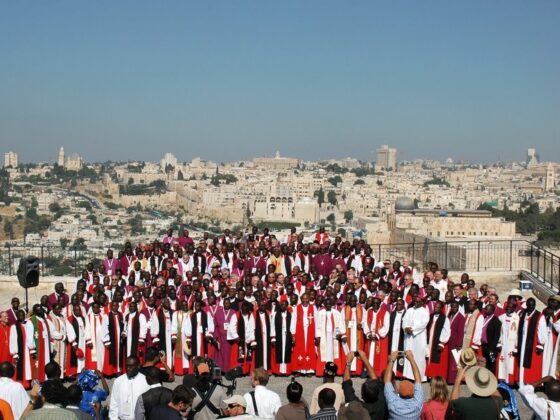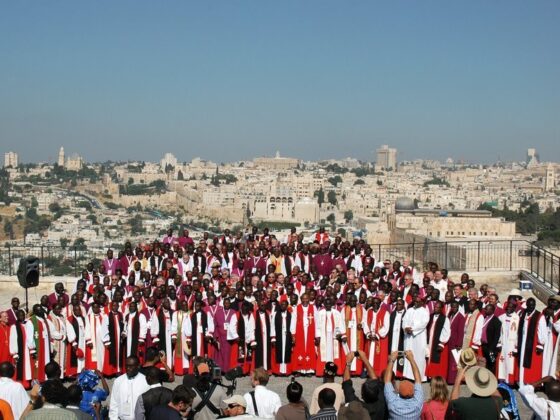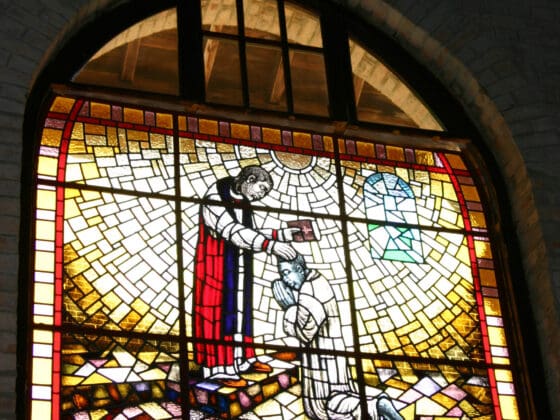It may be fairly said that 2 Timothy 3:16 — “all Scripture is inspired by God” — is the mother of all proof-texts because it brings to legitimate birth the idea that Scripture is God’s very Word written.
Many people today scoff at proof-texting as either simplistic or manipulative. Yet proof-texting has a long history in Scripture and theology. A good proof-text is like an apt proverb: “a word in season, how good it is” (Proverbs 15:23). The New Testament writers are constantly citing brief Old Testament texts (see e.g., Hebrews 1-2), and the Creed’s affirmation that Christ was raised “in accordance with the Scriptures” refers in part to the early Church’s collection of proof-texts.
“All scripture is inspired of God and profitable for teaching, for reproof, for correction, and for training in righteousness.” 2 Timothy 3:16 is the proof-text attesting to the divine and revealed authority of Scripture, which sets it apart from all other human authorities, whether bishops, traditions, reason, or experience. As the 16th century Anglican bishop John Jewel commented: “The Scriptures of God are the mount, from which the Lord doth show himself.” Nearly 500 years later, the Lambeth Bishops affirmed the same point, “that our creator God, transcendent as well as immanent, communicates with us authoritatively through the Holy Scriptures of the Old and New Testaments.” 2 Timothy 3:16 is also a word in context in which the Apostle Paul weaves together four central themes in this so-called Pastoral Letter, which have ongoing application to the Church today
First, Scripture is a sacred heritage. Paul reminds Timothy in the previous verse of “how from childhood you have been acquainted with the sacred writings.” We may imagine Timothy’s Jewish grandmother Lois and mother Eunice helping the boy trace his first Hebrew letters from the Torah. The Prayer Book Collect on Scripture (Advent 2, BCP page 598) commends the same reverential attitude toward the Scriptures. We are to “read, mark, learn, and inwardly digest them.” At times the Bible addresses us as a voice from Sinai, an alien fiat: do this, don’t do that! At other times, it becomes a “golden casket, where gems of truth are stored” (George Herbert). Set apart by the Holy Spirit, it is also the living tradition of the people of God. We need to sense both its strangeness and its familiarity. We can grasp this duality only by reading it voluminously and reverently.
Second, Scripture’s aim is salvation by faith. It is so easy to move from honoring all the words of Scripture to playing a game of Bible trivia. In verse 15, Paul reminds Timothy that the sacred writings have an aim, a target: “to instruct you for salvation through faith in Christ Jesus.” Similarly, Anglican clergy affirm this aim when they swear that they believe the Bible “to be the word of God and to contain all things necessary to salvation” (BCP, page 484).
Creeds never replace Scripture, but creeds crystallize the teaching of Scripture’s “rule of faith.” We can already see this crystallizing process in Paul’s reference to a “pattern of sound words” deposited through the Holy Spirit (1:13f.). This deposit may refer in part to the apostolic writings of the New Testament, for the New Testament itself focuses on the Old Testament revelation of the saving work of Jesus the Messiah.
Third, Scripture provides practical guidance for godly living. Having the exalted goal of salvation through faith, Scripture now brings us down to earth. It is inspired so as to be “profit-able for teaching, for reproof, for correction, and for training in righteousness.” Some early Christians like Hymenaeus and Philetus (2:17) thought they had arrived at the goal; they did not rank patience and suffering high among the virtues. They were forerunners of the health and wealth gospel
This is contrary to Paul’s vision for how Scripture equips the Christian to be the disciplined soldier, the trained athlete, and the hard-working farmer (2:1-6). While we are saved by faith, we must work out our salvation with fear and trembling. Scripture, he says, provides the tools for godly citizenship and leadership “that the man of God may be complete, equipped for every good work.”
Fourth, Scripture is a goad to evangelism. Keen Christians often feast on the Word, advancing from Bible study to Bible class to seminary without inviting others to come with them. They may even come to regard the Bible as a “very complex book” to be shared only among the elect. Timothy’s church contained Bibliophiles with “itching ears” for clever new interpretations. Against such smugness, Paul issues a stern warning: “I charge you in the presence of God and Christ Jesus who is to judge the living and the dead … preach the word, be urgent in season and out of season.” Jesus’ words came to the first disciples as a call for immediate response: “Follow me.” Likewise we cannot teach the Bible or commend it to others without urging them to respond to it by coming to Him who is its Alpha and Omega.
The Protestant Reformation was set ablaze by the sudden accessibility of the Bible in the vernacular language and a new openness of men and women to read it expectantly. Thomas Bilney, an early English Reformer, described the Bible’s impact in this way:
I chanced upon this sentence of St. Paul . . . “that Christ Jesus came into the world to save sinners” [1 Timothy 1:15]. This one sentence, through God’s instruction and inward working, which I did not then perceive, did so exhilarate my heart, being wounded with the guilt of my sins, and being almost in despair, that immediately I felt a marvellous comfort and quietness, insomuch that my bruised bones leaped for joy.”
Bilney’s experience of Scripture — its power to save the soul, to form a renewed Church, to nurture us in good living, and to evangelize others — has repeated itself in the life of Christians of all times. Will we receive it as God-breathed to-day? Will we?
“The Mother of All Prooftexts” appeared as the editorial for the October 1999 issue of Encompass, the newsletter of the American Anglican Council. Stained glass from St Cuthbert’s church in Edinburgh (Flickr).





